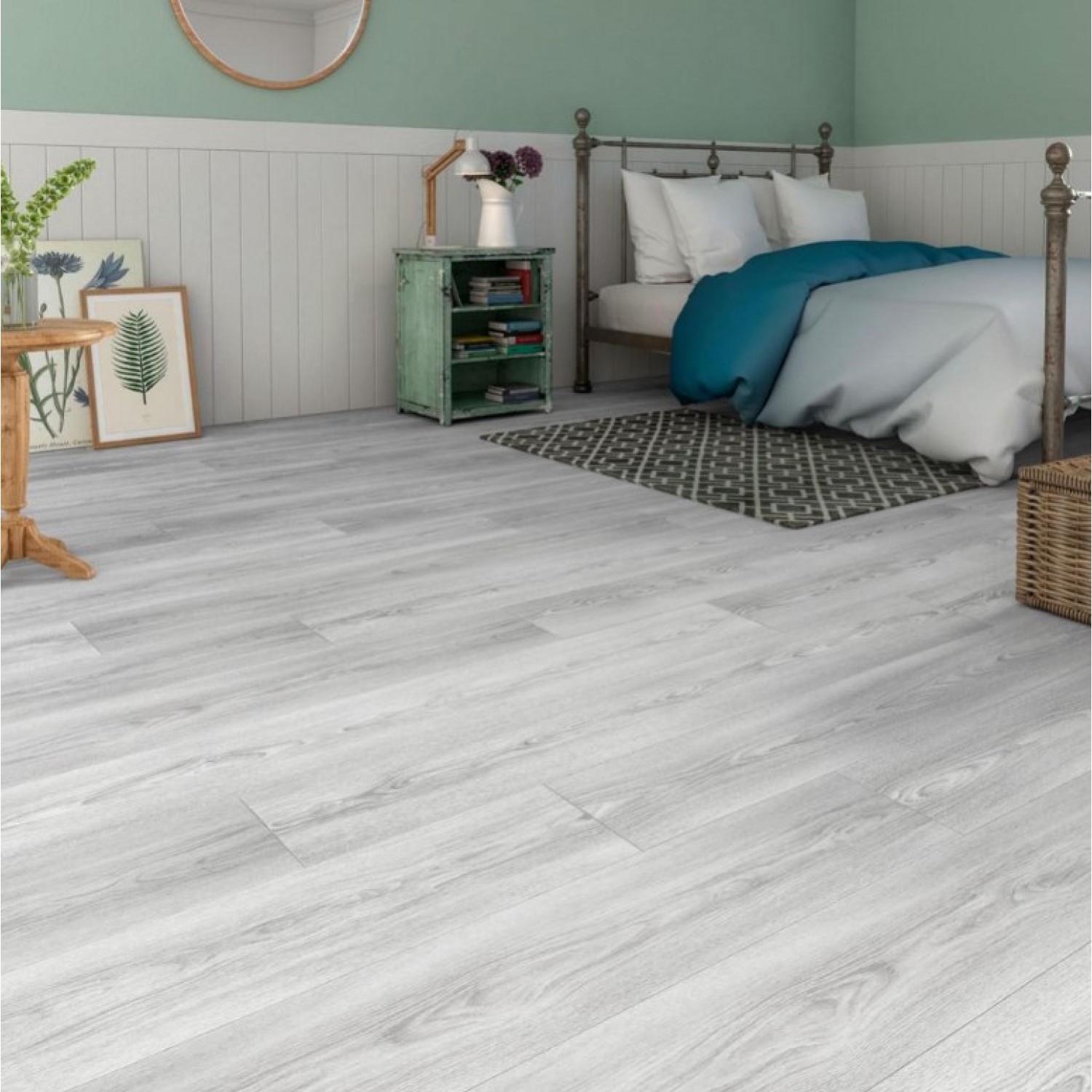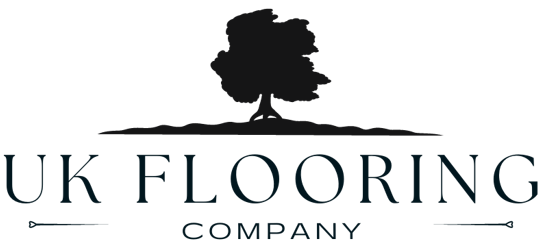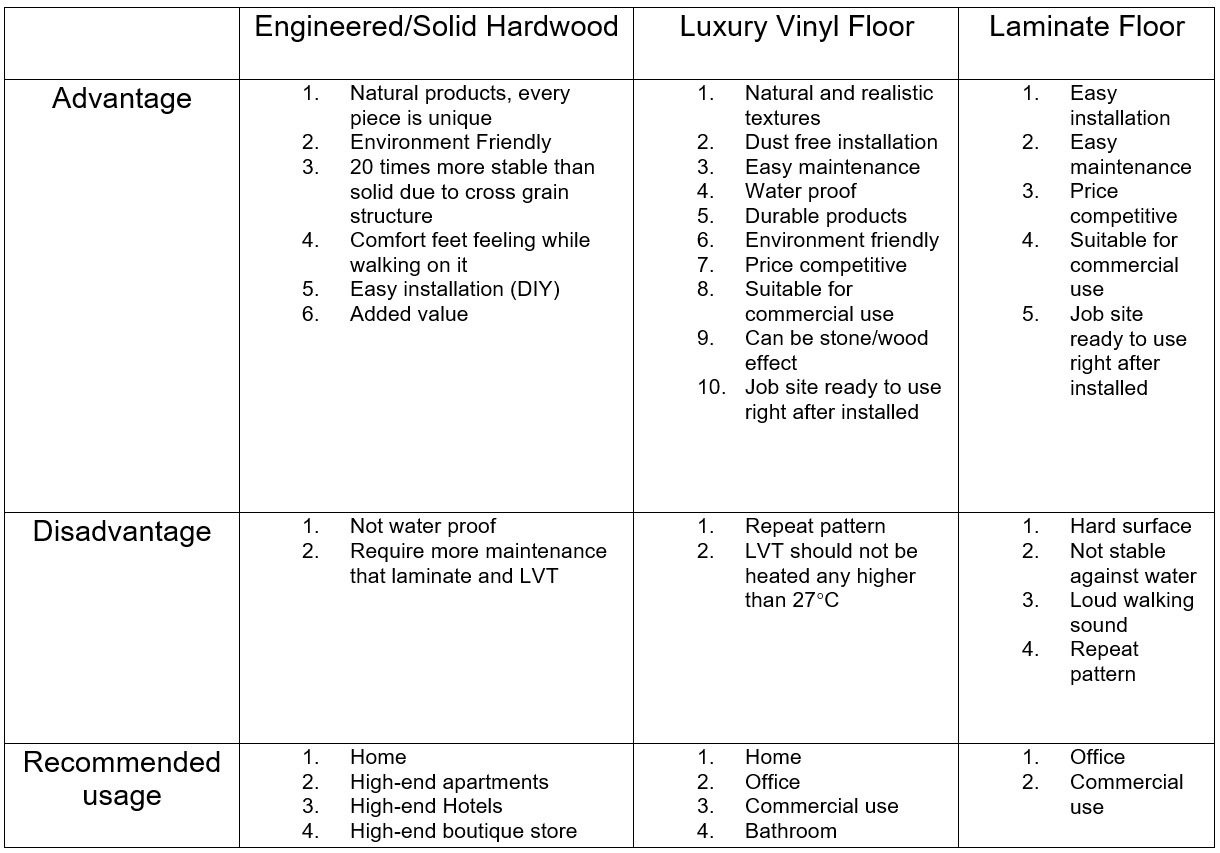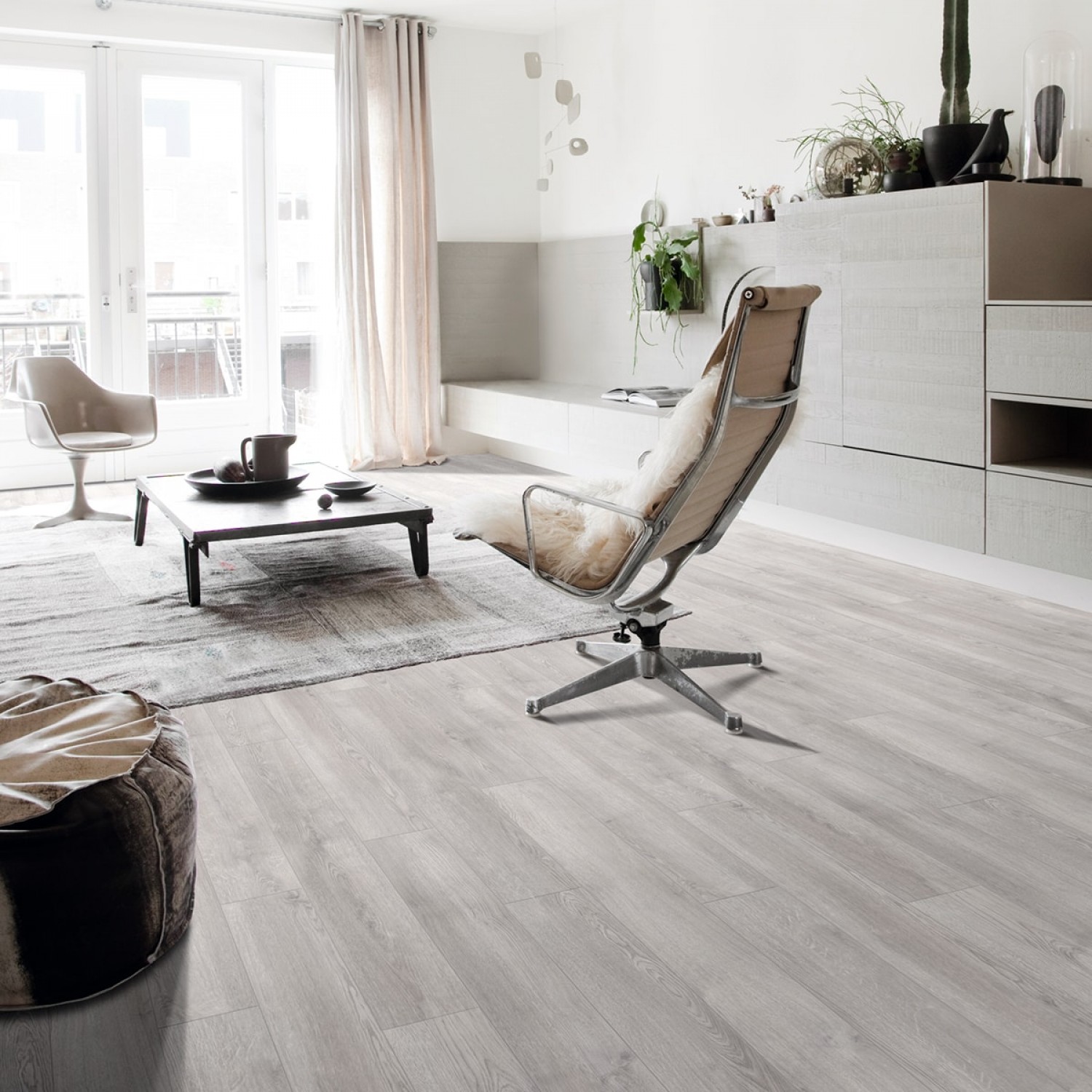5 Different Types Of Flooring Materials To Consider For Your Home – The Pros And Cons
-1920x600w.jpg)
02 Dec
20 Comment(s)
28314 View(s)
5 different types of flooring materials to consider for your home– the pros and cons
The pros and cons When it comes to hardwood flooring, many homeowners only think of solid wood and engineered wood. However, there are other manufactured woods, such as Luxury Vinyl Tiles that are fashioned to simulate the look and feel of hardwood.
Hardwood flooring is a beautiful but big investment. Thankfully there are other options that can give you the look of hardwood. We will break down the differences of each Engineered/Solid hardwood, LVT, Laminate so you can make the best decision for your home.
1.Solid WOOD FLOORING
Super popular in homes everywhere not only because wooden flooring like timber is gorgeous and suits many a different interior design scheme – be that more polished and contemporary and suits many a different interior design scheme – be that more polished and contemporary or rustic farmhouse – with varying grains, tones and finishes, but also because hardwood is very durable and resilient when treated and cared for properly. Timber is usually lacquered or oiled, very durable and resilient when treated and cared for properly. Timber is usually lacquered or oiled, depending on the look you prefer.
Advantages: Solid wood flooring is versatile in its look and can complement all types of interiors. It's long-lasting and will withstand up to five refinishes to remove surface scratches. Andrew Barker, Founder & CEO of HomeownerCosts adds that Real estate experts say that hardwood flooring could increase the resale value of your home as it's such a sought-after feature for many.
Disadvantages: It's the cost and the upkeep that comes with Solid wood flooring which can put it at a disadvantage as you will usually need a professional's help to get a good finish, unless you're up for some fairly expert DIY. Prices vary according to the thickness of the decorative wood veneer and quality of the core. Barker notes also that 'When exposed to moisture for a long time it can warp making them not fit for bathrooms or laundry rooms.' So you may not be able to install Solid wood flooring everywhere, especially not in a shower...
2. ENGINEERED WOOD FLOORING TYPES
Engineered wood floors feature a real wood veneer over a middle core of heat-formed wood and a base-supporting layer (used where shrinkage might be a problem). The stability of engineered flooring makes it a perfect choice over underfloor heating if the guidelines are followed, plus it is easier to lay than solid wood flooring.
Advantages: Because of how they are made, engineered wood planks are usually more dimensionally stable and less likely to expand or contract with temperature changes or fluctuations in humidity.
Disadvantages: Unlike Solid wood flooring, it won't take to refinishing so well because of the thinner top layer.
3. LAMINATE FLOORING
Laminate flooring is made from layers of high density fiberboard with a photographic image (of timber, tile etc) laminated to the surface below a tough, wear-resistant coating.


%20(1000%20×%20700%20px)%20(1000%20×%20650%20px)%20(1000%20×%20670%20px)-700x500w.png)
.jpg)

.jpg)

27 Comment(s)
It's fantastic that you mentioned that there is always the luxury vinyl option if you want the advantages of vinyl without having to worry about it appearing cheap or not lasting very long. Before the summer, my best friend is remodeling her entire home since she enjoys hosting dinner parties there for the whole gang. She asked me, however, what sort of flooring I would recommend installing, so I will send her this. Vinyl floors are lovely, in my opinion, so I hope she will give them some thought.
I'm renovating our family vacation house before my cousins come to visit during the summer holidays, so I was thinking of replacing the floorboards as well while I'm at it. I'm grateful you recommended that we consider luxury vinyl tiles for our new flooring since we can enjoy the beauty of hardwoods without worrying about the upkeep. I'll keep this in mind while I look for a flooring company to contact for the new installation soon.
Before my cousins arrive during the summer vacation, I'm remodeling our family vacation home, therefore I was considering redoing the flooring as well. I appreciate you suggesting luxury vinyl tiles for our new flooring so we can enjoy the beauty of hardwoods without having to worry about maintenance. I'll have this in mind when I search for a flooring business to get in touch with for the upcoming new installation, but right now I am leaning towards getting laminate vinyl flooring.
When you said that there was always the luxury vinyl option if you wanted the advantages of vinyl but didn't want to worry about it appearing cheap or not lasting very long, that drew my eye. Later this year, I'm building a restaurant, and I was considering employing concrete floor polishing for the establishment due to the way it looks. While looking for a flooring store to speak with about my other alternatives, I'll make sure to keep this in mind.
Blog wonder what a wonderful article i became a fan, i want more texts like this one i like it here
The constant battle against carpet stains, especially with a toddler and a clumsy dog in the house, has become a daily struggle. The idea of a hardwood flooring installation is starting to sound like a sanity-saving solution to easily wipe away the evidence of our everyday messes. You convinced me even more when you said that solid wood flooring has a timeless appearance that goes well with any kind of interior design. It can also be refinished up to five times to get rid of surface blemishes.
Informative read! This comprehensive guide explores the pros and cons of 5 different flooring materials, providing valuable insights for anyone contemplating a home upgrade. This is a must-read for homeowners seeking the perfect balance between aesthetics and functionality in their flooring choices.
My brother is searching for a few options to consider as he plans to replace his carpets. It's good that you said that it is an environmentally friendly option but also easy to maintain. I'll make sure to share this with him because I think it would be an excellent choice to try out. I'll look into vendors who can assist him in obtaining one; I appreciate you sharing!
Fantastic overview of flooring options! This article provides a concise breakdown of the pros and cons of five different types of flooring materials, making it easier for homeowners to weigh their options. Whether you're aiming for durability, aesthetics, or affordability, this guide helps you make an informed decision for your home. Great resource!"
Most impressive post! I have read so many blogs on health and fitness but this blog has amazing content
I am very pleased to discover this web page. I want to tell you thx for your effort in providing this amazing read! I certainly enjoyed it and I have you book-marked to follow new issues you post.
顶尖的网课代修 https://www.lunwenhui.com/particular.php?id=31 机构会有一个专业、经验丰富的团队,他们拥有在相关领域的学位和经验。
Thank you for sharing such valuable information. Your blog is a must-read for me!
留学生通常面临来自学术和生活方面的双重压力。留学生作业代写服务能够帮助他们减轻繁重的学术负担,让他们更集中精力学习核心课程或参与实践活动。这种减轻学业压力的效果使得留学生能够更好地平衡学术与生活,提高学习效率。
为什么选择我们的网课代上服务?
1. 专业团队,课程掌握精通
我们的代课团队由各领域的资深学者和教学经验丰富的教育专家组成,确保在各类网课上都能为您提供高质量的代课服务。无论您是修读商科、计算机科学、工程、社会科学或人文学科,我们都能为您匹配最合适的代课专家,确保课程内容的准确掌握和作业的高效完成。
我们拥有一支由学术专家组成的专业团队,覆盖多种学科领域,无论是基础课程、专业课程还是高难度的实验性课程,我们都能为你提供全面的网课代修服务。我们保证按照你的学习进度和要求,代为完成课程中的所有任务,包括日常作业、测试、讨论互动、期中期末考试等。我们的目标是确保你不仅能顺利通过课程,还能在每一项任务中获得满意的成绩。
In terms of performance,luxury phones are typically equipped with industry-leading technology to ensure users enjoy a smooth and efficient experience.Beyond standard communication functions,these devices often offer a range of personalized services,such as dedicated customer support and security features,meeting the diverse needs of high-end users and exemplifying the perfect fusion of technology and luxury.
Vertu phones offer a range of exclusive services, such as 24-hour personal assistants and global rescue services, which further enhance the prestigious experience of users. Owners of Vertu phones can enjoy customized services and support, which are hard to find in other mobile phone brands. Vertu ensures that its customers can enjoy the top-level treatment and assistance anytime, anywhere through these services.
If you want to know sexy pornstars name then click on the website given above.
So engaging and challenging, can't get enough!
Leave a Comment